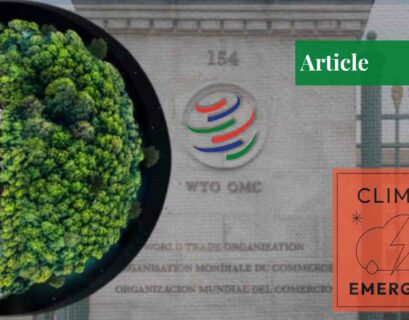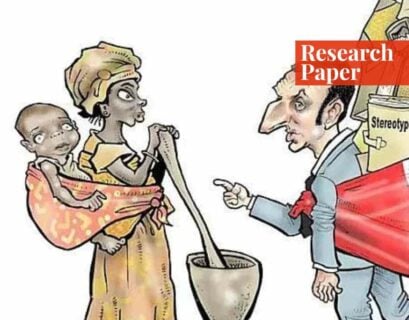She is a graduate of International Relations from Quaid-e-Azam University Islamabad.
Climate change alludes to the rapidly changing dynamics of global climate, with anthropogenic causes resulting in the melting of glaciers across the Atlantic and Arctic, unexpected force majeure events such as typhoons, hurricanes, cyclones, floods, excessive rainfall, water shortages, declines in agricultural productivity, desertification, species extinction, and a climate exodus.
Sources of anthropogenic GHG (greenhouse gas) emissions include fossil fuels and agricultural activities, whilst natural GHG emissions include forest fires, savanna fires, and volcanoes.
Space agencies reported more than 72,000 fire events in Brazil between January and August of 2019. Despite such immense evidence, there is still an ambiguity amongst the two factions about the reality of climate change—those who believe that global warming and climate change are naturally occurring cyclic phenomena, utterly unassociated with human activity. The other faction thinks that unprecedented human activity after the dawn of the Industrial Revolution, particularly regarding coal and fossil fuels, etc., has contributed to GHG emissions that trap infrared rays from the Sun and ultimately lead to global warming.
In 2019, a report found that the largest publicly traded oil and gas majors (Exxon Mobil, Royal Dutch, Shell, Total, BP, and Chevron) had invested over $1 billion of shareholder funds in the three years following the Paris Agreement on misleading climate-related branding and lobbying.
The impacts of climate change are notable in Earth’s rising temperatures. The grave consequences of inaction have finally caused states to address this issue. Because of its transboundary scope, the development of an international body for its mitigation was indispensable. The solution lies not in unilateral action by any one state but in global consensus, collective efforts, and international agreements signed and ratified on the matter of climate change.

Due to the graveness of this issue, it became a part of many institutions’ manifestos. They work on providing incentives and data support to international mitigation agreements and adaptation efforts on climate change. However, due to inherent weaknesses in the structure of existing institutions and the lack of an effective, legally binding global climate regime, united decision-making is becoming difficult, raising the need for the development of a new multilateral regime.
Of late, no strong environmental global regime is working with the collaboration of all states or entailing in it the capability to acquiesce nations to follow a global standard. The only potential institutions having the capability to handle this issue are multilateral development banks like the African Development Bank, Asian Development Bank (ADB), European Bank for Reconstruction and Development (EBRD), Islamic Development Bank (IDB), World Bank (WB), International Monetary Fund (IMF), etc. These banks can create special funds for green projects and help countries pursue the clean development mechanism (CDM) goals.
Such banks may also impose certain conditions on countries to reform their domestic environmental policies in exchange for loans. Currently, WB gives $2 billion in carbon funds and supports emission-cutting activities. It has also worked in collaboration with the United Nations Framework Convention on Climate Change (UNFCCC) in granting climate investment funds.
In addition to such financial institutions, informal forums like G-8, G-7, and G-20 and regional organizations like Asia Pacific Economic Cooperation (APEC), and the European Union (EU) also play their part. APEC’s work on clean energy, established in 1972, illustrates its effective role in helping developing countries formulate environment-friendly projects and give them access to CDM. It cannot, however, play a guiding role, especially when the stakes of economically strong countries are concerned.
Global Institutions for Climate Change
Apart from the efforts of different institutions in mitigating climate concerns, there is a climate-specific financial institution that works with other organizations like the United Nations Development Programme (UNDP), the United Nations Environment Programme (UNEP), and WB to provide green funds to its member countries, and that organization is the Global Environment Facility (GEF). Other prominent institutions are detailed below:
International Civil Aviation Organization (ICAO)
It compiles data on fuel consumption, sets emission standards, and gives technical guidelines for reducing them. It has worked under the Kyoto Protocol to tackle emissions and periodically sends reports to UNFCCC on its emission activities, which account for nearly two percent of global GHG emissions.
International Maritime Organization (IMO)
This agency of the UN was established as a regulatory framework for international shipping. It was also tasked by UNFCCC in the Kyoto Protocol to provide reports on shipping sectors’ GHG emissions and work on curbing them.
International Atomic Energy Agency (IAEA)
The IAEA also contributes to reversing climate change by helping countries use nuclear power, a near-zero-carbon energy source. However, it does not explicitly address climate-related issues.
Food and Agriculture Organization (FAO)
Climate change will bring a fatal decline in food productivity, as the agricultural sector is most impacted by climate change. Through this platform, farmers adapt by adopting new, environment-friendly strategies in agricultural productivity, which currently account for 13–15% of global GHG emissions. Furthermore, FAO can also help in cutting emissions from low-carbon biofuels. For effective bio-energy policies, it also hosts a secretariat for global bio-energy partnership—a forum for providing technical expertise.
World Food Programme
It does not explicitly address or work with climate change. However, it can help supply food in times of emergency due to the climate crisis and help mitigate global hunger in possible future emergencies.
United Nations Development Programme (UNDP)
UNDP is a UN agency working in 166 countries to promote sustainable development goals. As an agency of GEF, it funds green projects and gives 10% of its budget to environmental development. It has also played a leading role in implementing the Montreal Protocol Multilateral Fund. The UNDP effectively advises the governments of member states on how to develop and implement energy-efficient programs. Its work is particularly evident in developing countries.
World Health Organization (WHO)
The World Health Organization can help improve resilience to climate-related diseases. It also prepares nations to face new health challenges related to climate change and devise strategies in advance.
World Bank and the International Monetary Fund
The World Bank—a financial organ of the UN—lends money to states for infrastructural development. A board of governors oversees it, consisting of 185 members who finance it and have a role in the institutions’ decision-making according to their contribution to funding. It can make countries adopt climate considerations in their development plan. However, due to the influence of “anti-climate change states” in decision-making, it is unlikely to play any role in climate change, and similar is the case with the IMF.
World Trade Organization (WTO)
The WTO was established to promote the ideals of free trade and reduce trade barriers. It can be key in whittling down climate change by favoring climate-friendly products and means of production. Organizations are debating carbon tariffs and lower trade barriers on low-carbon products and services.
International Agreements on Climate Change
First Climate Conference
It took place from February 12 to 23, 1979, in Geneva. The World Meteorological Organization (WMO) organized it, leading to the establishment of the World Climate Program (WCP), the World Climate Research Program (WCRP), and the Intergovernmental Panel on Climate Change (IPCC), created by WMO and UNEP in 1988.
Montreal Protocol
The Montreal Protocol came into force in 1987 and further operationalized the Vienna Convention of 1988. It is the most successful international agreement, ratified by 197 countries, designed to phase out chlorofluorocarbons (CFCs), which were replaced by hydrochlorofluorocarbons (HFCs). However, a Kigali amendment in the Montreal Agreement, which came into force on January 1, 2019, replaced the HFCs with hydrofluoroolefins (HFOs). It is a legally binding agreement that limits HFC emissions by 85% by 2045.
Second Climate Conference
This international agreement played an important step in establishing a global climate treaty, as an IPCC report confirmed that anthropogenic emissions are responsible for GHG emissions. Thus, it laid the groundwork for the establishment of the United Nations Framework Convention on Climate Change, which entered into force in 1994, and the establishment of the Global Climate Observing System (GCOS).
Earth Summit
Also known as the Rio de Janeiro Earth Summit and the UN Conference on Environment and Development (UNCED), it first took place in 1992. The second summit happened in 2002, ten years after the first one, and was named RIO+10, with the Johannesburg Declaration being its main outcome. The third summit, which took place in 2012, named RIO+20, resulted in three documents:
- The Rio Declaration On Environment and Development.
- Agenda 21.
- Forest Principles.
It has also resulted in the signature of three legally binding agreements:
- Convention on Biological Diversity (CBD).
- United Nations Convention to Combat Desertification.
- Framework Convention on Climate Change (UNFCCC).
The negotiation to create UNFCCC began in 1990 at the UN General Assembly. An inter-governmental negotiating committee was formed to discuss the creation of such a framework, and it was ultimately formed in 1992 during the Earth Summit. It brought the world together to take collective action in managing GHG emissions and is directly related to the Kyoto Protocol and the Paris Agreement. Under the UNFCCC, leaders from around the country meet annually to discuss climate change. These meetings are called the conference of parties.
Conference of Parties
Berlin Mandate COP-1
The first-ever “conference of the parties” was held in Berlin from March 28 to April 7, 1995, during which it was agreed that the convention was too limited to urge the signatories to work collectively and to reduce GHG emissions to 1990 levels by 2000. Members began a two-year negotiation process to reach a legally binding agreement/target to reduce GHG emissions. The process started through the Berlin Mandate and culminated in the Kyoto Protocol.
Kyoto Protocol COP-3
Kyoto Protocol took place in the first ten days of December 1997 in Kyoto, Japan. It was created in COP-3 as the first greenhouse gas reduction treaty. It focuses on reducing GHG emissions by around 5.2% by 2012. An important part of the Kyoto Protocol was that it puts all the responsibility for increasing GHG emissions on developed countries, putting a heavier burden on them for reduction under the principle of “common but differentiated responsibilities (CBDR).” Nevertheless, it also places some responsibilities on developing nations. These differentiated commitments have divided the countries of the world into two factions.
Under this protocol, other concepts of emission trading/carbon trading, clean development mechanisms, and joint implementations are also given. It is an effective way of curbing climate change but non-participation by the US and China was a severe blow to its effectiveness, due to which many other nations also sidestepped its ratification. Under the premise of non-compliance by major polluters, Canada also renounced its climate commitments undertaken in the Kyoto Protocol in 2011. Apart from them, OPEC countries and many US enterprises and corporations contributing heavily to anthropogenic factors, represented by the Global Climate Coalition (a lobby group), oppose any effort to reduce GHG emissions, hindering global governance over climate change.
Paris Agreement COP-21
Under this non-binding agreement, most countries have agreed to reduce their emissions well below 2°C above pre-industrial levels. Before and during the conference, countries submitted comprehensive national action plans and their nationally determined contributions (NDCs) to the UNFCCC regarding curbing climate change at the domestic level (Article 4, Paragraph 2). It also focuses on the role of developed states in assisting developing nations in mitigating anti-environmental policies.
If you want to submit your articles and/or research papers, please check the Submissions page.
The views and opinions expressed in this article/paper are the author’s own and do not necessarily reflect the editorial position of Paradigm Shift.


















